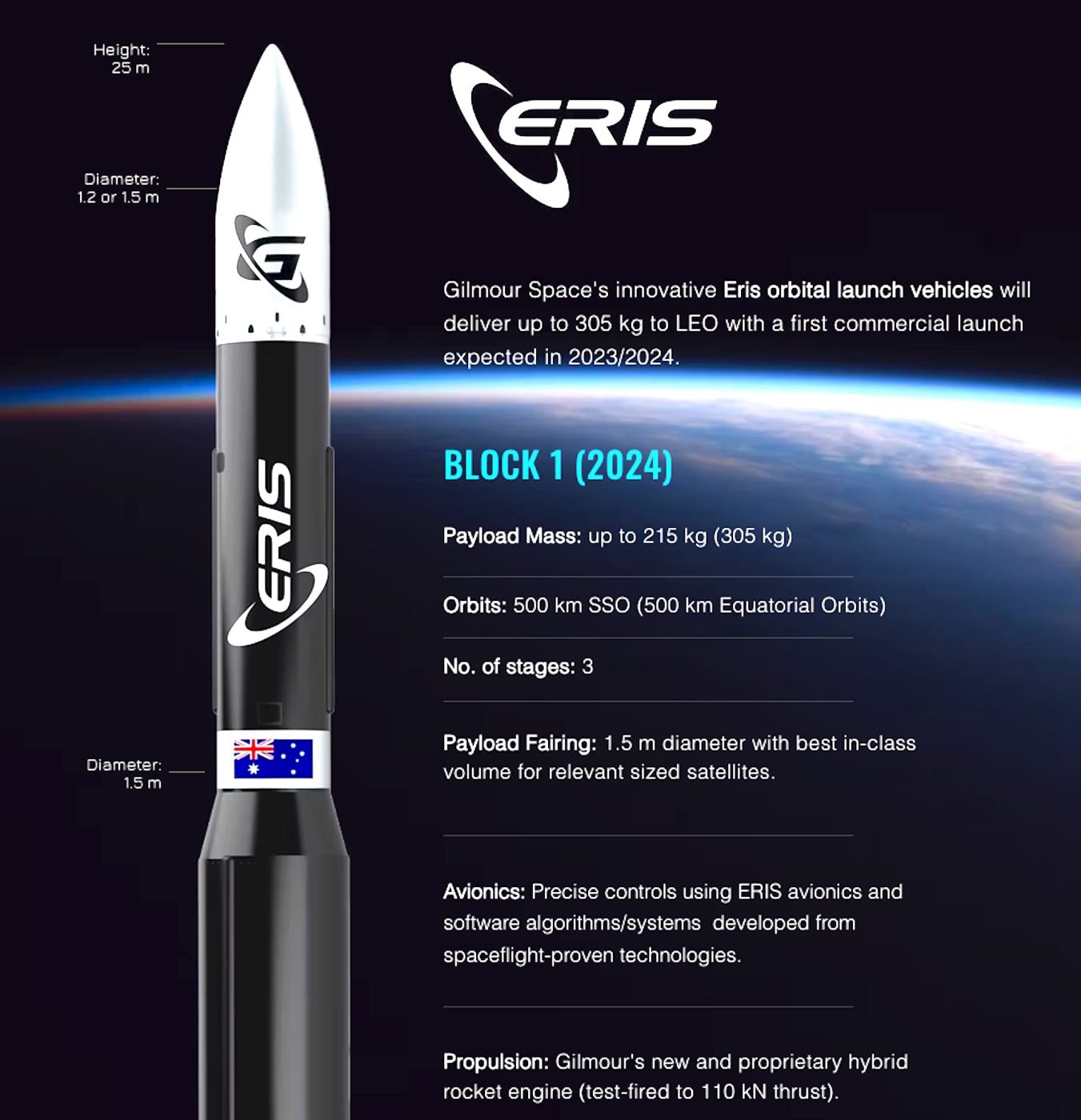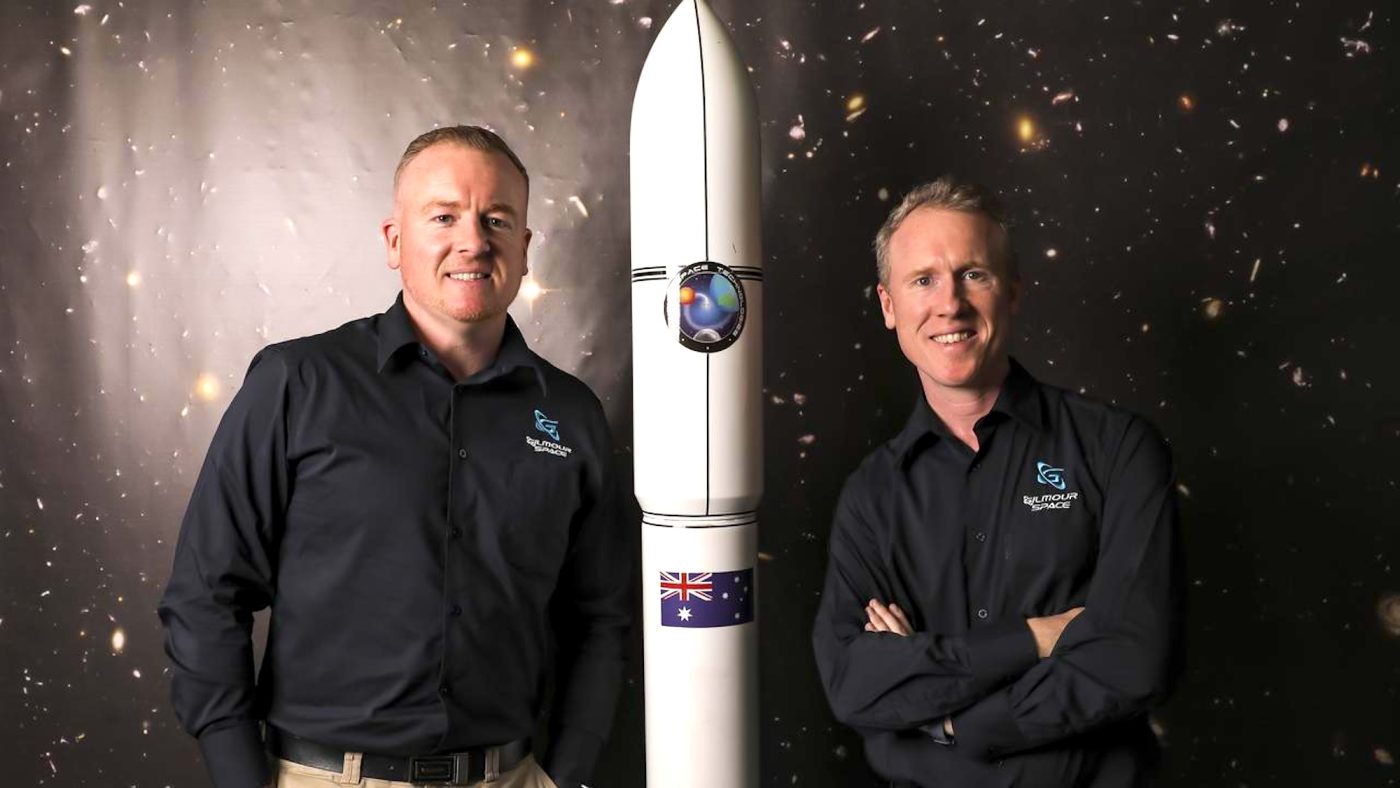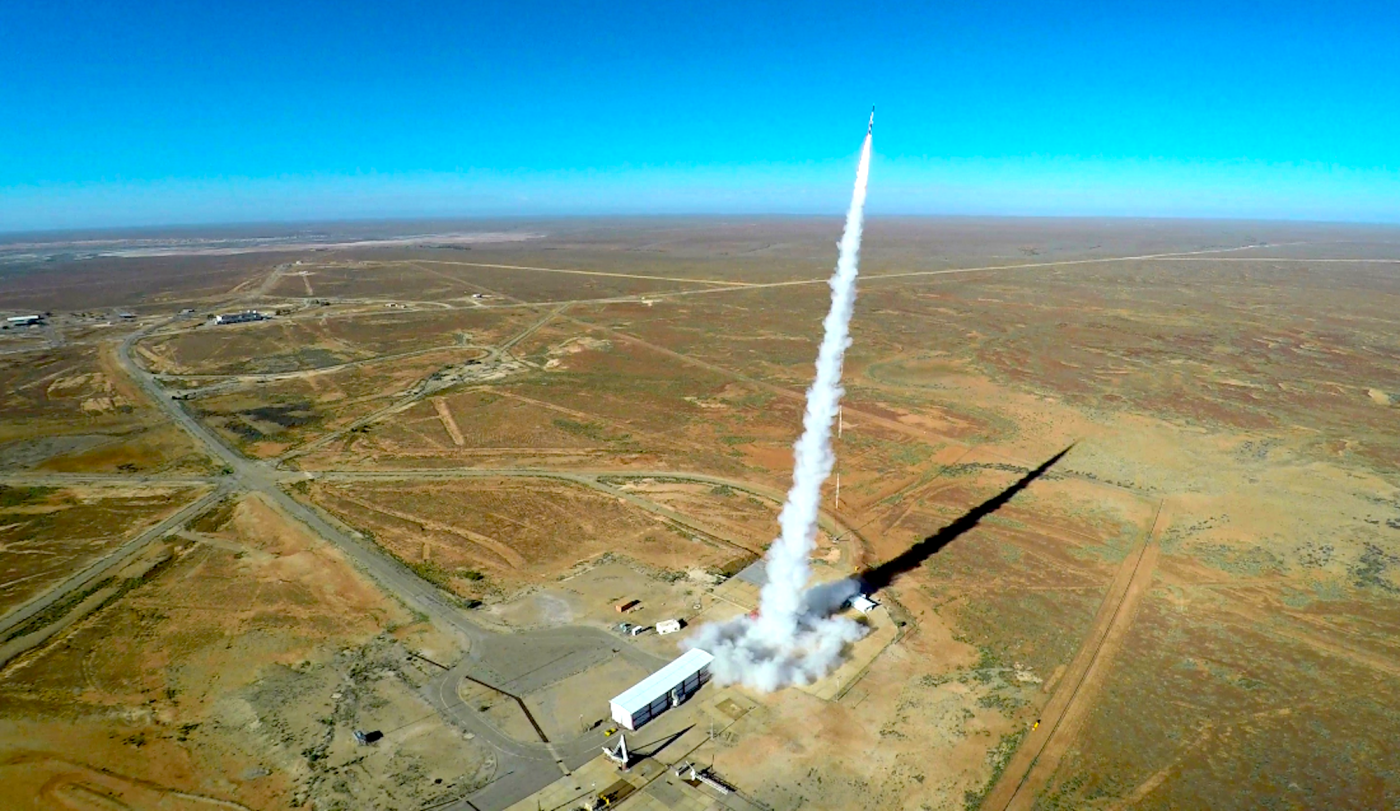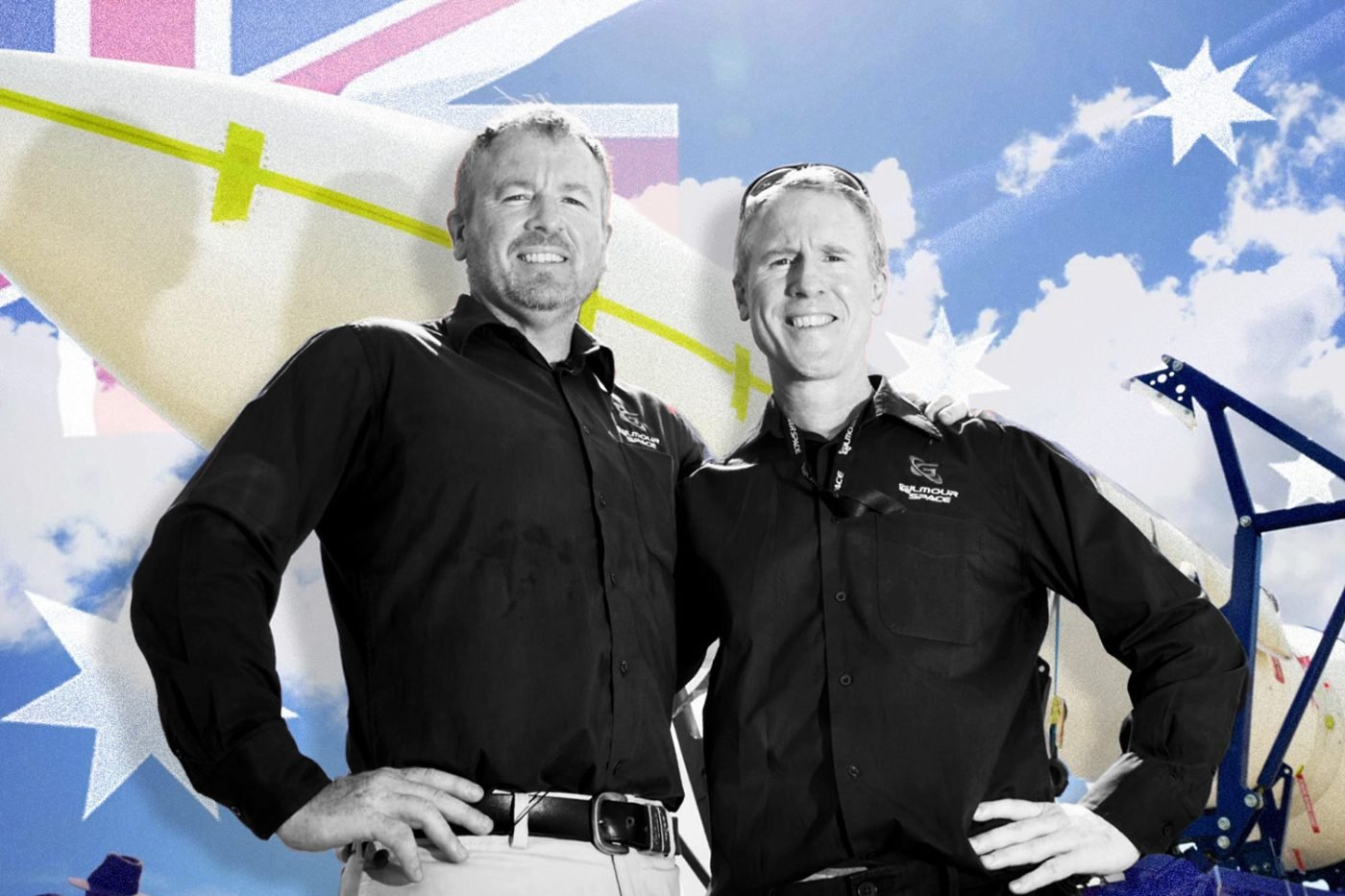- The government has granted Gilmour Space approval to conduct its first commercial orbital rocket launch from Queensland.
- Eris 1 rocket’s inaugural flight could mark a historic step in the nation’s rocket-building capabilities.
- A growing domestic aerospace industry is supported by hundreds of Australian suppliers who will welcome the news.
In a big news day for Australia’s long-underappreciated space industry, private firm Gilmour Space has received government approval to launch the nation’s first-ever commercial goods-carrying rocket from Australian shores. With the nation seemingly poised to step more into the role of an independent spacefaring nation, the inaugural orbital test flight of Aussie-made Eris 1 will likely occur early in 2025.
The Eris 1 Rocket
Gilmour Space’s Eris 1 is a comparatively small orbital launch vehicle measuring 23 metres and weighing 34 tonnes at liftoff, capable of delivering a 300kg payload into low-Earth orbit (LEO). Eris 1 will feed into a fast-growing global demand for small satellites that can provide quick turnaround times, responsive scheduling, and cost-competitive access to space for clients both at home and abroad.
Related Stories
What will make this story particularly interesting for layman Aussies, however, is that the Eris 1 will mark the first orbital test of an Australian-made rocket launched from Australian soil. If successful — fingers crossed, everyone — this could significantly advance the country’s capacity not only to support other major nation’s space missions, as has historically been the case, but also to conduct its own and serve a growing clientele that craves regional autonomy.

From Gold Coast to Launch Pad
Founded by brothers and Gold Coast residents Adam and James Gilmour, Gilmour Space has rapidly expanded to employ over 200 people and work alongside a vast network of 300 Australian suppliers, further demonstrating that Aussie space ambitions already stretch well beyond this firm alone; Gilmour Space is only one part of a dynamic ecosystem of aerospace manufacturing, high-tech engineering and (very) advanced materials science.
This “all-Australian” approach could give the nation a stronger foothold in a globally burgeoning market, with governments, universities, and private enterprise alike all increasingly looking to small satellite constellations as a means to generate both money and power in the so-called final frontier which has been both popularised and catalysed by US-based companies SpaceX and Blue Origin.

Australia’s Space-Age Regulatory Environment
Australia’s regulatory framework for space activity was pretty much untested until the establishment of the Australian Space Agency in 2018, which has since offered a much-needed strategic vision for the nation’s sovereign space capabilities. Gilmour Space’s new permit, which follows from a May 2023 permit to use the Bowen Orbital Spaceport in North Queensland, exemplifies how regulatory frameworks are better aligning with industry need.
Gilmour Space undertook a comprehensive dress rehearsal of the Eris 1 back in September, running all the way down to the iconic ‘T-minus 10 seconds’ mark. Though the trial did uncover a few minor issues, it gave the nod to a number of key systems including propellant tanks, high-pressure gas vessels, autonomous tank pressure systems, and the rocket’s sixteen thrusters. With the necessary government approvals now sorted, we wait with bated breath for the announcement that final adjustments have been completed and a launch date is locked in.
The Underappreciated Story Of Aussie Space Travel
Australia’s space exploits are not as widely celebrated as the United States or former Soviet Russia, but the nation’s contributions are nevertheless considerable. The Woomera Test Range in South Australia, established in the 1940s, was one of the world’s busiest rocket testing sites for decades, playing host to British and European missile trials and, in 1967, Australia launched its first satellite, WRESAT, from Woomera using an American Redstone rocket.

Australia has also been central to the development of deep space communication networks, notably through the Parkes Observatory, which relayed signals from the Apollo 11 Moon landing in 1969, as well as the Tidbinbilla Deep Space Communication Complex near Canberra, which has supported countless NASA and international missions.
All of these historic moments have established Australia as a valuable partner and collaborator in global space endeavours. And yet, the nation has for decades lacked a dedicated, domestically-launched orbital rocket. The Eris 1 flight will close this long-standing gap, bridging a storied past and a bold new future.

